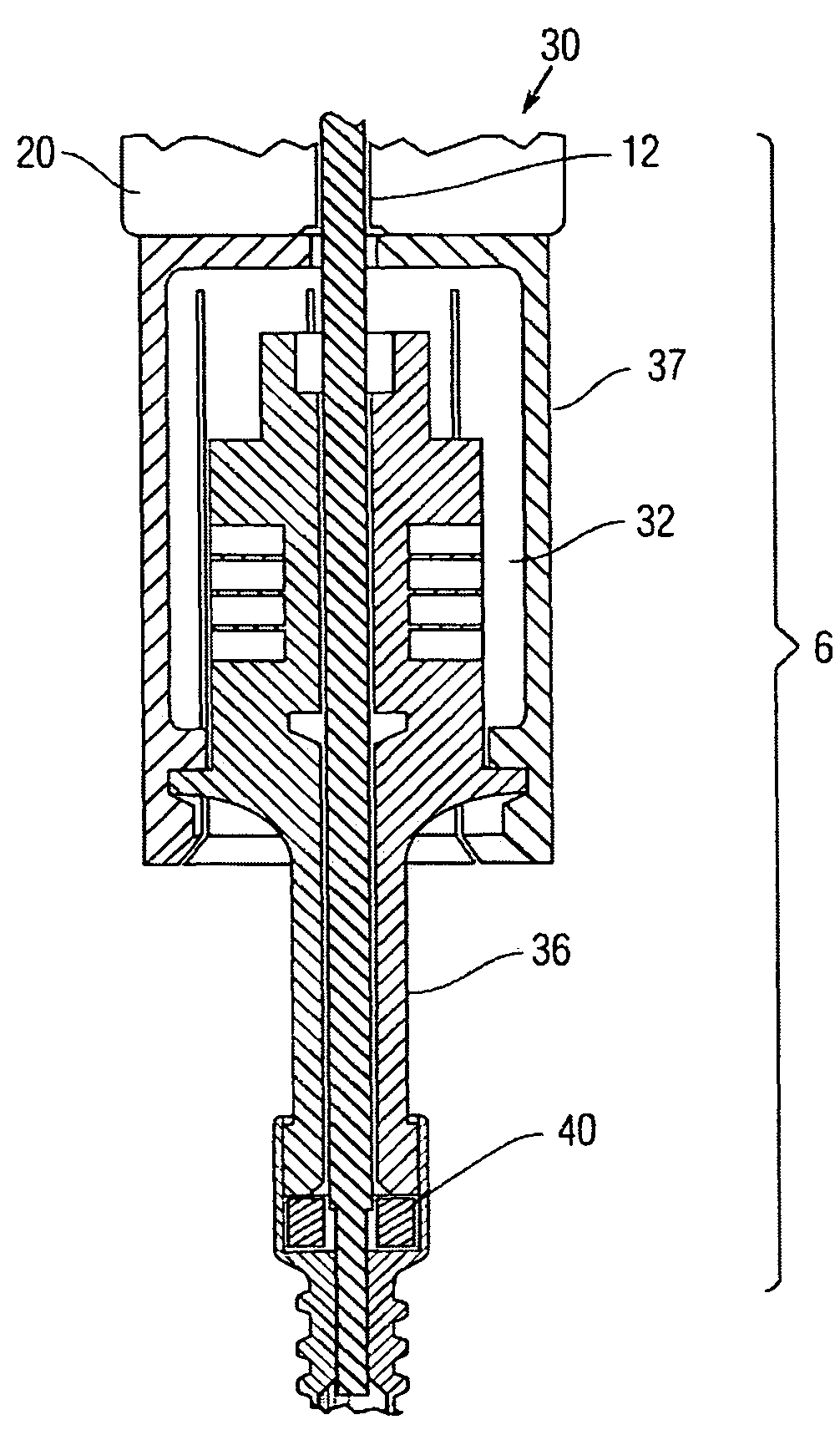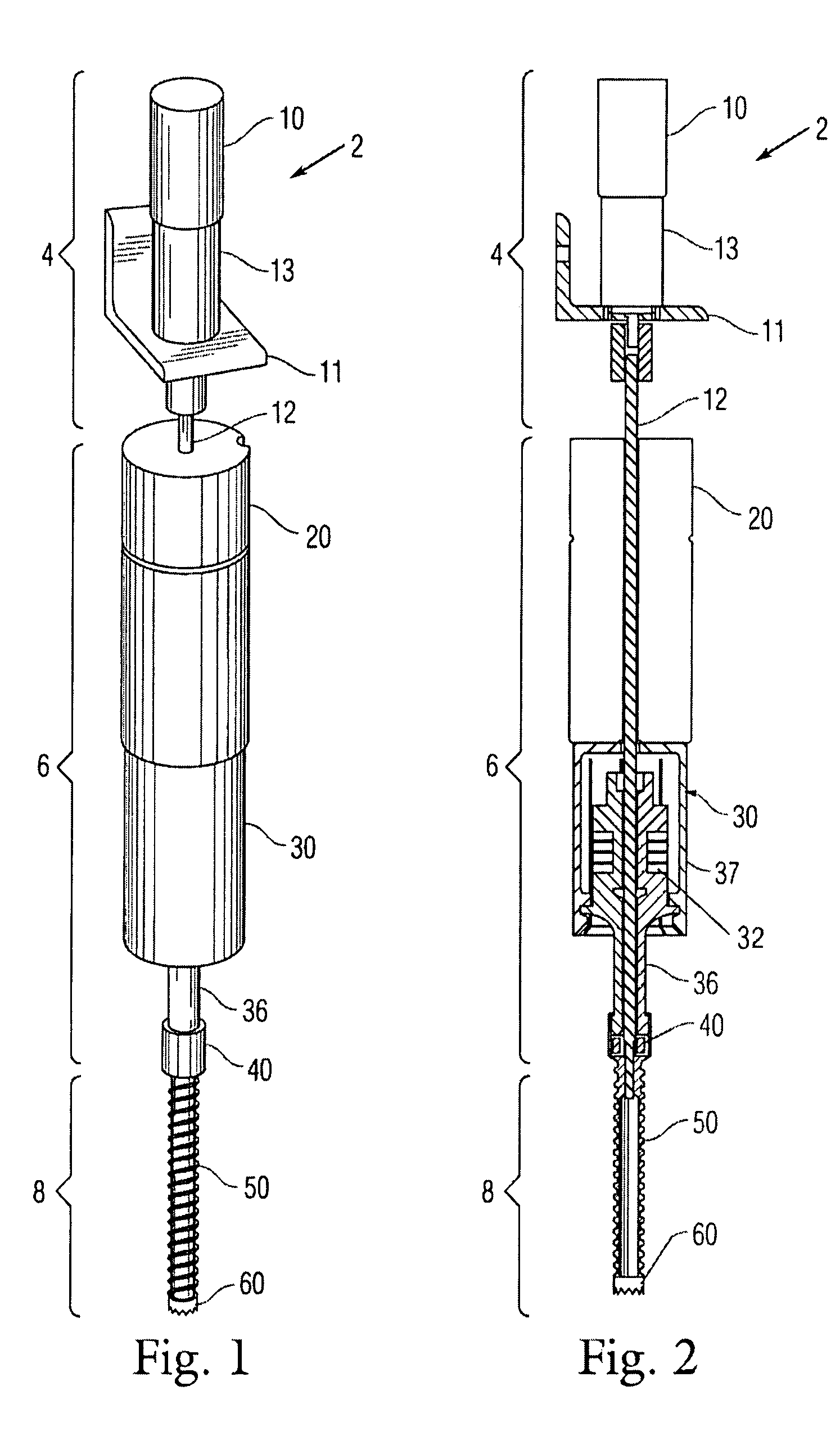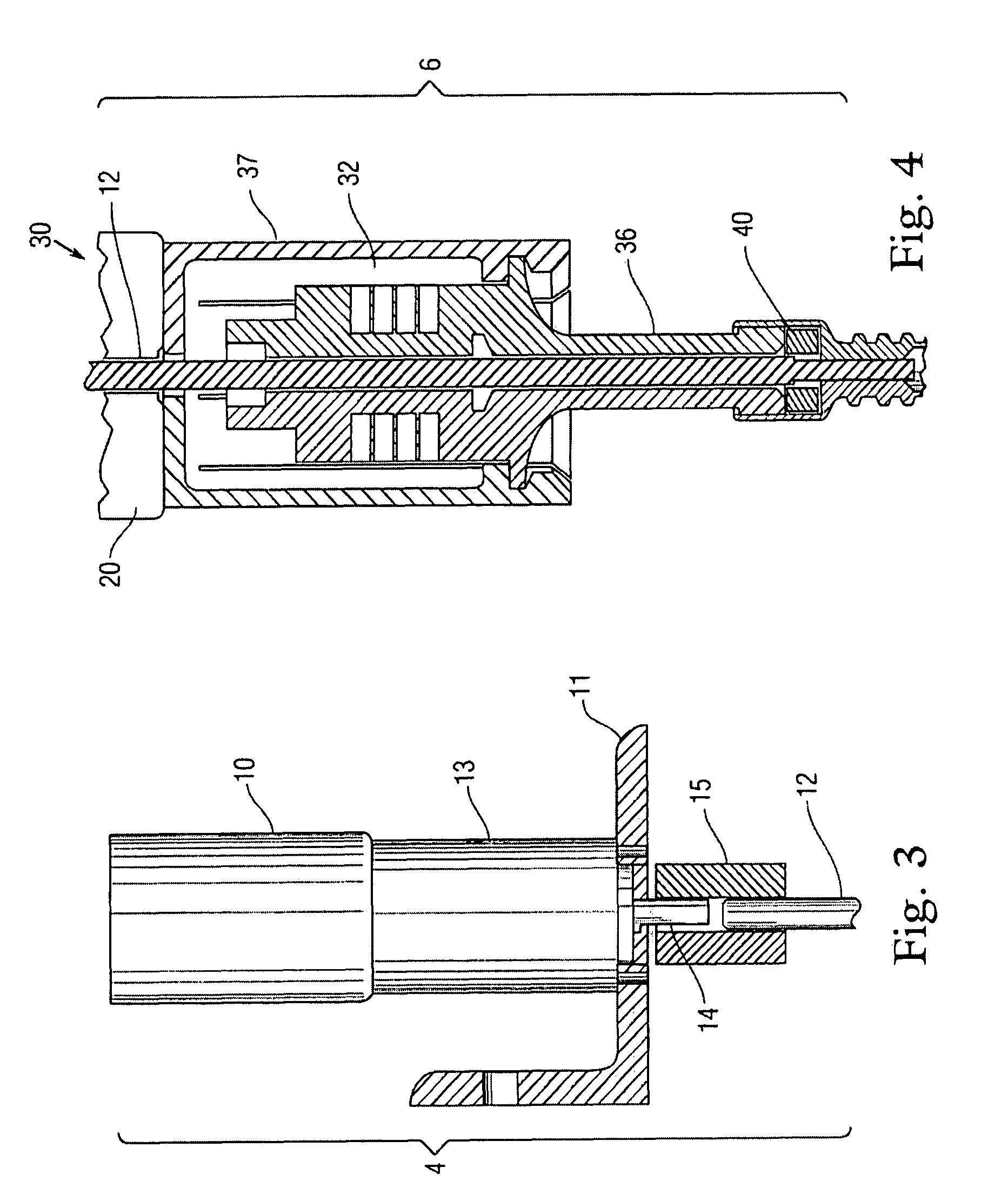Ultrasonic rotary-hammer drill
a rotary hammer drill and ultrasonic technology, applied in the field of drilling, can solve the problems of inability to operate continuously without loss of efficiency, limited drilling techniques, and limited application capabilities of existing rotary corers, etc., to achieve the effect of reducing the cost of drilling, and consuming low amounts of power/energy
- Summary
- Abstract
- Description
- Claims
- Application Information
AI Technical Summary
Benefits of technology
Problems solved by technology
Method used
Image
Examples
Embodiment Construction
[0026]The present invention is a hammering drill based on an ultrasonic / sonic actuator that employs a unique drill bit and independent hammering actuator with rotary actuator for operation of the bit by a combination of hammering with rotation for increased penetration and cuttings removal efficiency.
[0027]FIG. 1 is a perspective view of an exemplary embodiment of the hammering drill based on ultrasonic / sonic actuator 2 that generally includes three main sections: a rotary section 4; hammering ultrasonic / sonic actuator section 6; and drill bit 8.
[0028]The hammering ultrasonic / sonic actuator section 6 further comprises a set of preload weights 20 mounted atop an ultrasonic / sonic actuator 30, the actuator 30 being connected via an ultrasonic transducer horn 36 to a free mass 40. The free mass 40 is sonically coupled to the drill bit 8.
[0029]The rotary section 4 further comprises a motor 10 mounted stationery on a bracket 11 or the like, the motor 10 being coupled through a drive shaft...
PUM
 Login to View More
Login to View More Abstract
Description
Claims
Application Information
 Login to View More
Login to View More - R&D
- Intellectual Property
- Life Sciences
- Materials
- Tech Scout
- Unparalleled Data Quality
- Higher Quality Content
- 60% Fewer Hallucinations
Browse by: Latest US Patents, China's latest patents, Technical Efficacy Thesaurus, Application Domain, Technology Topic, Popular Technical Reports.
© 2025 PatSnap. All rights reserved.Legal|Privacy policy|Modern Slavery Act Transparency Statement|Sitemap|About US| Contact US: help@patsnap.com



